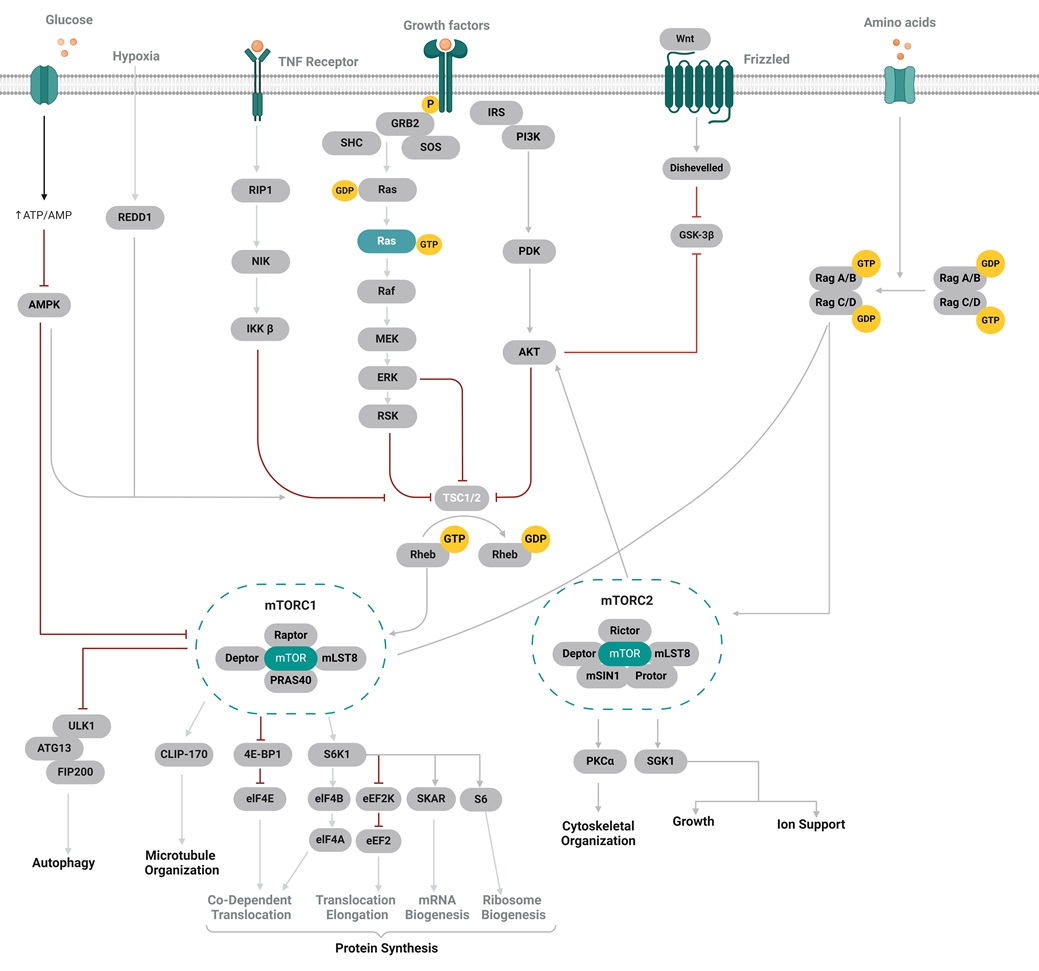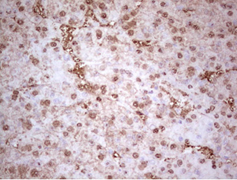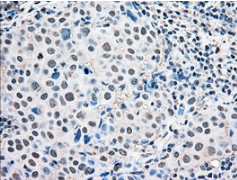mTOR Signaling Pathway
The Mammalian Target of Rapamycin (mTOR) signaling pathway is pivotal in regulating cell metabolism, growth, proliferation, and survival. mTOR is a serine/threonine kinase in two distinct complexes: mTOR Complex 1 (mTORC1) and mTOR Complex 2 (mTORC2). These complexes have different functions and are regulated by various cellular signals, including growth factors, nutrient availability, and energy status. In the past decade, research breakthroughs have unveiled the activation of the mTOR pathway in diverse cellular processes, ranging from tumor formation and angiogenesis to insulin resistance, adipogenesis, and T-lymphocyte activation. This pathway is found to be deregulated in significant human diseases like cancer and type 2 diabetes, sparking widespread scientific and clinical attention towards mTOR. Download the poster, which provides a detailed overview of the mTOR signaling complexes.
mTORC1
mTORC1 consists of five components: mTOR, RAPTOR (regulatory-associated protein of mTOR), mLST8 (mammalian lethal with Sec13 protein 8), PRAS40 (proline-rich AKT substrate 40 kDa), and DEPTOR (DEP-domain containing mTOR interacting protein).
mTORC1 positively regulates cell growth proliferation by promoting anabolic processes like biosynthesis of proteins, lipids, and organelles and limiting catabolic processes such as autophagy.
mTORC1 promotes protein synthesis by phosphorylation of the eukaryotic initiation factor 4E-BP1 (4E binding protein 1) and the S6K1 (p70 ribosomal S6 kinase 1). mTORC1 prevents 4E-BP1 binding to elF4E, promoting cap-dependent translation. The stimulation of S6K1 activity leads to an increase in mRNA biogenesis, cap-dependent translation, and elongation. mTORC1 also regulates mitochondrial metabolism and biogenesis.
Key Markers:
mTORC2
mTORC2 comprises six different proteins: mTOR; RICTOR (rapamycin-insensitive companion of mTOR); mSIN1 (mammalian stress-activated protein kinase interacting protein); PROCTOR-1 (protein observed with RICTOR-1); mLST8; and DEPTOR.
mTORC2 regulates cytoskeletal organization, cell survival, metabolism, and proliferation; many of these are dependent on AKT activation by mTORC2 by phosphorylating at the Ser473 position.
Studies have shown that the removal of specific components of mTORC2 inhibits the phosphorylation of AKT at Ser473 and selectively hinders the downstream phosphorylation of specific AKT substrates. Suppressing AKT activity subsequent to mTORC2 depletion diminishes the phosphorylation of forkhead box protein O1 (FoxO1) and FoxO3a transcription factors. This, in turn, activates these transcription factors, regulating the expression of genes associated with stress resistance, metabolism, cell-cycle arrest, and apoptosis.
Key Markers:
mTOR Signaling Pathway































































































































































































































































 Germany
Germany
 Japan
Japan
 United Kingdom
United Kingdom
 China
China






